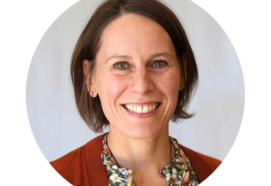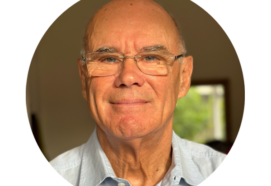In this podcast series ‘Autism, a parents guide’ Dr. Ann Ozsivadjian discusses autism with freelance journalist Jo Carlowe.
In this episode, Ann discusses different types of support that can be tailored to children with an autism diagnosis. A diagnosis can be a key for a parent, unlocking the right support for their child. They discuss interventions such as Cognitive Behavioural Therapy (CBT) and mindfulness, and briefly music, art and occupational therapy.
We are delighted that this podcast series for parents is supported by the Autism Diagnostic Practice at Clinical Partners. Working nationwide with only the most experienced consultants, Clinical Partners ensures you get the best ASD diagnosis and help tailored specifically to your child, as fast as possible. Discover more.
You can listen to this podcast directly on our website or on the following platforms; SoundCloud, iTunes, Spotify, CastBox, Deezer, Google Podcasts and Radio.com (not available in the EU).
Other Episodes in The Series
Episode 1 ‘Identifying Autism – getting the right diagnosis’ with Dr. Ann Ozsivadjian.
Episode 3 ‘How autism presents differently in girls’ with Dr. Ann Ozsivadjian and Dr. Marianna Murin
Episode 5 ‘Recognising mental health issues’ with Dr. Ann Ozsivadjian
Episode 6 ‘Food Sensitivities and Proclivities’ with Dr. Vicki Ford
Episode 7 ‘Tailoring Support CBT and Mindfulness’
Episode 8 ‘Challenging Behaviour and Demand Avoidance’

Principal Clinical Psychologist at Evelina London Children’s Hospital, Guy’s and Thomas’ NHS Foundation Trust
Ann trained in clinical psychology at Oxford and is now an honorary principal clinical psychologist at the Evelina London Children’s Hospital, honorary researcher at King’s College London and is also an independent practitioner. Ann worked in the Complex Paediatric Neurodevelopmental Disability Service at the Children’s Neurosciences Centre, Evelina London Children’s Hospital (Guy’s and St Thomas’ NHS Foundation Trust) for 16 years. Her clinical and research interests include the assessment and treatment of mental health difficulties in ASD, cognitive pathways to anxiety in ASD, and also working with girls and women on the autism spectrum.
Transcript
Interviewer: Hello, I’m Jo Carlow, a freelance journalist with a specialism in psychology. Welcome to the latest instalment of ‘Autism, a Parent’s Guide’ with Dr. Ann Ozsivadjian, Principal Clinical Psychologist at Evelina London Children’s Hospital, Guy’s and St. Thomas’s NHS Foundation Trust.. This podcast series focuses on Autism Spectrum Disorder and is designed to help families and carers. It is produced by the mental health charity, the Association for Child and Adolescent Mental Health, ACAMH, for short, in partnership with Clinical Partners. For more information about ACAMH, visit www.acamh.com.
The focus of today’s discussion is tailoring support to children with an autism diagnosis. We will be discussing how different interventions, such as cognitive behavioural therapy, commonly known as CBT, and mindfulness, can benefit children with ASD. Hi, Anne. Welcome again. Can you start by introducing yourself?
Dr. Ann Ozsivadjian: Yes. I’m a Clinical Psychologist, specialising in autism and neuro-developmental conditions. For several years, both before and after my clinical training, I worked in specialist services for children and young people with neuro-developmental conditions at both Guy’s and St. Thomas’s and at the Michael Rutter Centre at Maudsley Hospital. And now I’m mostly in independent practice, although I do still do a lot of work for the NHS in terms of teaching, training, often in collaboration with ACAMH, in fact.
Interviewer: Thank you. When a parent receives an autism diagnosis for their child, how can they begin to use that diagnosis to help them understand their child?
Dr. Ann Ozsivadjian: Well, hopefully, they will have had a very detailed assessment and they will have received both verbal and written feedback about how autism presents in their child, what the professionals observed, and also parents, hopefully, will have had an opportunity to discuss whether the assessment findings reflect the child that they know.
Now, this is a really important part of the process because autism covers such a wide spectrum and many descriptions of autism that parents may have read may not be relevant to their child at all. So parents really need to have a detailed formulation, focusing on the strengths as well as areas of difficulty, to help them begin to see how they can help their child thrive, in fact. So, hopefully, the diagnosis will help them understand the drivers for the behaviours that they may be seeing. For example, tantrums not just being due to naughtiness, but having a function of communicating something, such as a desire to escape or distress. So it’s that sort of level of detail which is really important in helping parents understand their child.
Interviewer: And how can a diagnosis be a key for a parent into unlocking that right support for their child?
Dr. Ann Ozsivadjian: A starting point may be thinking about how to support your child at home. And depending on the age of your child, there are various Early Bird courses, such as the parenting programme designed by the NAS, which I’ve mentioned in another podcast. This is really designed to help you understand your child’s autism. They describe it as getting yourself into your child’s world and finding ways to develop interaction and communication. Developing understanding of your child’s behaviour, how to use support and structure. So support such as, for example, the teach approach, which is about helping your child understand what’s happening in the world around them using visual techniques. The PEC System, Picture Exchange Communication System, which is about helping your child communicate if they have very limited verbal language. There’s also the Early Birds, Healthy Minds course, which is aimed at supporting the mental health needs of young people with ASD. So your local paediatrician or local NAS support group may be able to direct you towards other local initiatives or these ones as well, including support groups, holiday clubs, and that sort of thing.
A diagnosis may be helpful, but not necessarily automatically, and that’s very important for people to know in obtaining support within school and, or in fact thinking about what is the right setting for your child, educationally-speaking. So, as I mentioned in the other podcast, many localities have autism outreach services, which will involve a trained professional with expertise in autism visiting the school to see what supports or adaptations can reasonably be made within the school environment. And a diagnostic report, again, will be a crucial piece of evidence, either in supporting this, or in terms of an Education or Health Care Plan. An EHCP is the legal document which identifies educational, health and social needs of your child and sets out the additional support necessary to meet those needs. So, although a diagnosis isn’t a guarantee that you will have an EHCP, because this is based on need, not diagnosis, it can be instrumental in gaining that if it’s needed.
Interviewer: What interventions can a family anticipate being offered following an ASD diagnosis?
Dr. Ann Ozsivadjian: So I think a key thing here is that families often describe receiving a diagnosis and then nothing happens. So nothing’s automatic, as I mentioned. But some localities do have very clear, defined pathways post-diagnosis, such as good sign-posting, good resources. So it’s important to, as I mentioned before, check your borough’s local offer page. So the local offer being one spot where everything that’s available locally… All the information is there, anyway, for parents to find out what’s available.
Accessing targeted therapy may be more of a challenge. Speech and language therapy tends to be more widely available. This can include a wide range of interventions, such as language support, obviously, but also social skills training, emotional literacy programmes, as well as more traditional speech and language therapy input. Many families seek behavioural or mental health support. They may be able to access this via local CAMHS, especially if their CAMHS team has a specialist neuro-developmental team. But, again, regrettably, this isn’t universal, and all too often families really struggle, in particular to access mental health support. So, it is a real challenge.
In terms of what parents should do if nothing is automatically available, then it really is about talking to people, talking to your GP, talking to anyone that you can. And local support groups, I think, will be very helpful in terms of parents giving each other ideas and tips for local resources. Music therapy, art therapy, as well, can be incredibly helpful for some people. One parent described how calming it was for their child and how it really opened up the world, in fact, for their child to see it in a different way. And then, of course, occupational therapy as well, which can be massively helpful in managing sensory needs or practical supports in terms of daily living skills.
Interviewer: What about cognitive behavioural therapy? Is that used for children and young people with ASD? And, if so, how does it benefit this group?
Dr. Ann Ozsivadjian: So cognitive behaviour therapy, or CBT, is a talking therapy, which has masses of evidence demonstrating its usefulness for a number of mental health conditions. And as we know mental health problems are much more prevalent in individuals with ASD, in particular, anxiety. And CBT lends itself particularly well to anxiety treatment, actually. And there’s now a reasonable body of evidence indicating that CBT can be very useful for people with ASD.
So CBT involves looking at unhelpful thinking and behaviour patterns, and trying to put in place some changes which improve emotional well-being. And it’s a talking therapy. It involves a lot of self-reflection and also social interaction, which can be challenges for people with ASD. So researchers have looked into what sort of adaptations to CBT are useful. And this can vary hugely from individual to individual. So, for some people that I work with, I make very few adaptations, if any at all, and then others may require significant modification. And that might include lots of visual supports, lots of structure, including, say, a visual session plan. Regular breaks, interspersing therapy activity with more fun activities, that sort of thing. So CBT can be incredibly helpful in assisting individuals and their families learning to manage anxiety. And to a lesser degree, I think, managing problems with mood as well, it can be very helpful, but I think it’s particularly useful for anxiety.
So strategies might include, for example, learning to recognise and label feelings. Putting a number on it, the way we call it sometimes, which is learning how to rate your feelings, how bad they are out of ten, for example. Enabling you to identify feelings before they become too intense, so that you can address them. Asking the question, how bad is this really? Again, putting a number on it. That, in a sense, is putting things in perspective.
With some older adolescents, you may be able to engage in a much deeper level of therapy. Looking at core beliefs that the young person may hold about themselves, the world, or certain rules for life, or schema, as they’re known, which somebody may have developed. So, for example, a core belief might be, nobody will ever like me, and therefore the schema might be, therefore I shouldn’t bother interacting with people, there’s no point. That sort of thing. So, in terms of CBT, you aim to modify some of these, if they’re distorted or unhelpful ways of thinking. And CBT can also be useful for people who are exploring the meaning of diagnosis or having issues with identity.
But it is very important to know that you can’t CBT away everything. So, for example, if a child is anxious about school, then it’s likely that it’s actually the environment that needs to change, it’s not CBT that needs to take place. And also CBT really doesn’t work for everyone. It is quite an active therapy. It requires a level of commitment and insight which not everyone may have, or simply people just may not take to it. And also some people are too unwell to participate in CBT, and they may need medication to help them access it.
Interviewer: Right. And to access CBT, would a family approach their GP?
Dr. Ann Ozsivadjian: That would be a good starting point, yes.
Interviewer: What about mindfulness? How can this benefit children with ASD? And, once again, where would you go to access this type of support?
Dr. Ann Ozsivadjian: So, given that CBT isn’t useful for everybody, it is great to have evidence-based alternatives, and mindfulness is one approach for which there is a very small amount but interesting evidence that it can be very useful for people with ASD. Not just, in fact individuals with ASD, but also people caring for them as well.
Interviewer: What does the evidence show?
Dr. Ann Ozsivadjian: Well, the evidence shows that mindfulness is certainly better than no treatment at all. I only know of one or two studies which compared mindfulness to other treatments, one of which was CBT. And in those studies, they found that both CBT and mindfulness were equally useful. So mindfulness can be a great approach to life in general, not just stress management. And there’s lots of definitions of it, and one is that it’s a mental state achieved by focusing one’s awareness on the present moment, while calmly acknowledging and accepting one’s feelings, thoughts and bodily sensations, using a therapeutic technique.
So it is really quite different to CBT, in that CBT really aims to work with the content of thoughts, mindfulness aims to change your relationship with your thoughts. There’s many more similarities and differences than that. And I worked very closely with a colleague who is mindfulness and CBT-trained, and I learned a great deal from her. And we refer each other cases.
And mindfulness can be very useful for people with ASD, because one focus of mindfulness is emotional awareness, and that can be a real area of difficulty for people with ASD. For people who have difficulty either recognising or regulating their emotions, it can just teach a different relationship with your emotions, developing better coping strategies, such as being less reactive, by observing non-judgmentally your emotions, rather than engaging with them.
In terms of accessing it, it would really depend if your local team have someone who’s mindfulness trained. Some schools deliver mindfulness within in-house. And then there are apps, such as Headspace, which is pretty well-known these days, I think.
Interviewer: And for those listening to this podcast, where can they go for more information or to find helpful resources? And you’ve mentioned quite a few resources.
Dr. Ann Ozsivadjian: Yes. So in terms of learning more about what help is available, or might be available, again, the NAS website, Autistica, ACAMH, they all have sections, I think, on how mental health presents, what supports might be available, what’s evidence-based. Professor Emily Simonoff, myself, and some other researchers at King’s College, London also developed an app called Molehill Mountain, which is a CBT kind of mini-programme, in a sense, and it helps people develop strategies for managing anxiety in autism.
Interviewer: So, Ann, with cognitive behavioural therapy, can you talk a bit more about the adaptations when you’re working with this particular client group?
Dr. Ann Ozsivadjian: Yes. So, as I mentioned, one key adaptation is having visual supports. So CBT already uses lots of worksheets and things like that, but you might rely more on those sorts of visual supports. CBT, again, has visual formulations anyway. But, again, you might… I have my whiteboard with me all the time because I use it to support, not just the CBT principles, but also when people are telling me, for example, about an event that happened, I’ll often use the whiteboard to help them structure their thinking. So, for example, I’ll draw little stick figures and then say, so, what’s he saying to you? And have thought bubbles as well. So that helps people think about, ah, yes, I know what you mean now. So it’s what was going through my mind at the time. Asking that question verbally doesn’t necessarily generate what people are thinking, but if you have the thought bubbles on a whiteboard, then it’s like, I had this thought, this thought, this thought. Might just support thinking a little bit more.
Another adaptation is to have regular breaks. I think some people are very good at masking stress levels, for example. And it’s important to ask people… An hour is a long time to be thinking and talking about feelings and interacting with someone. So it might be important to have regular breaks or just have a chat about something that someone’s really interested in.
And involving parents is also an adaptation. I always ask people if they want to be seen together or separately. And even much older adolescents, even some of the young adults that I see who are still living at home, quite often would like their parent to be present. And I very rarely find that there’s anything, any reason, not to have a parent present. Because they can really support their child with their thinking. They can also fill in gaps, like when someone’s recounting something that may have happened and it’s event or an incident. Sometimes people with autism may have difficulty organising their thoughts or difficulty with autobiographical memories. And parents can be essential there. And also they’re essential in terms of supporting their child in-between sessions as well. Just reminding them what some of the goals and strategies might be.
Interviewer: And do you do anything to prepare the child prior to the first visit, if they’re anxious about going into a new environment?
Dr. Ann Ozsivadjian: I always speak to parents before a first appointment. That’s routine now in my practice. So that they know what to expect and how to prepare their child. So I think that is very important. In the service I used to work in we also had photos of the environment, so that children would know what to expect.
Interviewer: That the child is shown before they come to the appointment?
Dr. Ann Ozsivadjian: Yes, yes. Another really key thing… It’s not an adaptation as such, but it’s a really important part of delivering CBT for people with autism, is for the person delivering it to have some expertise in autism and understand what some of those differences might be. I think, talking to people who’ve had therapy in the past which hasn’t worked, often they say the reason is that person just didn’t get me or they didn’t get autism. So there is something about not just having a toolbox of adaptations, but actually just really understanding the condition, so that you can troubleshoot some of the difficulties that might arise.
Interviewer: For other episodes in the series ‘Autism, A Parent’s Guide’, please visit www.acamh.org and follow ACAMH on Twitter, @ACAMH, or search on your podcast provider. Once again, our thanks go to Clinical Partners for supporting this autism podcast series. With the UK’s largest network of senior mental health and autism professionals, Clinical Partners can help ensure your child is fast-tracked to the right diagnosis and optimised treatment plan. For further information and advice for families and carers, search for Clinical Partners Autism, or visit www.clinical-partners.co.uk.


